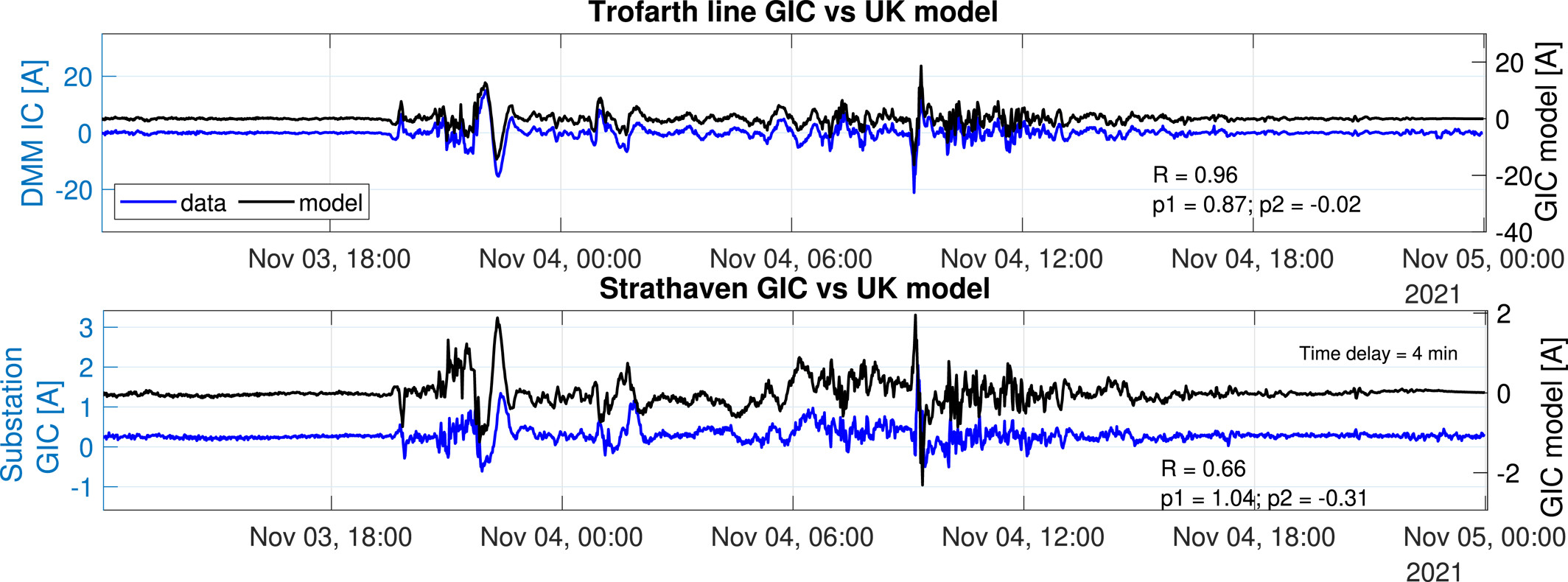MIST
Magnetosphere, Ionosphere and Solar-Terrestrial
Validating GIC models in the UK using Differential Magnetometer and Magnetotelluric Data
By Juliane Huebert (British Geological Survey)
Geomagnetically induced currents (GICs) are a well-known consequence of increased geomagnetic activity due to solar storms. They pose the risk of damaging ground-based infrastructure like the high voltage power transmission network, gas pipelines and railways. Large-scale models of GICs in the UK exist, taking into account geomagnetic data, the induced ground electric fields and the configuration of the ground-based technologies. Validating these complex models is not easy and requires independent observations. To measure GICs in the HV voltage power network, we applied the Differential Magnetometer Method (DMM) at several sites in Britain. At each site, one magnetometer was placed under the power lines while a second one was located a few hundred meters away. By looking at the difference in the data between the two we can isolate the direct current flowing in the power lines. Data were recorded for several months, catching periods of increased geomagnetic activity. We then compared the measured current strength to the BGS GIC model developed from open source data sets of the UK power grid. The model also uses a measure for the ground electrical conductivity that is based on so-called magnetotelluric (MT) measurements which we performed in a country-wide campaign. MT data is necessary to characterize the spatial changes in the ground electric field due to local geology. We found our model and the field measurements to match very well, giving confidence that our simulations of the whole UK grid are very close to the correct values.

See full paper for further details:
Hübert, J., Beggan, C. D., Richardson, G. S., Gomez-Perez, N., Collins, A., & Thomson, A. W. P. (2024). Validating a UK geomagnetically induced current model using differential magnetometer measurements. Space Weather, 22, e2023SW003769. https://doi.org/10.1029/2023SW003769